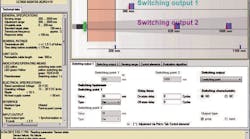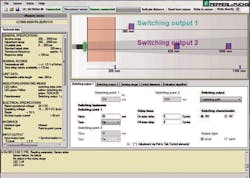Consider scrapyards: These dirty outdoor environments are filled with objects of every shape, size, and material. Controls on machinery that manipulate scrap need sensors to detect when conveyor belts are empty, bales are present, and bins are full. Overhead cranes maneuvering above scrap piles and containers also require positional feedback.
Ultrasonic sensors are up to the task: They use the propagation time of sound to track objects, so their performance is unaffected by color or glossiness. Their evaluation pulses easily penetrate dust. Standard models sense objects from a few inches to more than 30 ft away.
There are caveats: Scrapyards are notoriously noisy, and acoustic interference can degrade output. Plus, anything can end up as scrap, and some materials and shapes deflect or absorb ultrasonic pulses. The solution is to avoid mounting ultrasonic sensors directly over processes being monitored. Instead, mount them at a slight angle. In addition, use units with filtering algorithms and detection modes. These widen or narrow the sensor beam to match the monitored area’s dimensions — to focus on a scrap container’s opening, for example.
Another challenge is preventing crosstalk in sensor arrays: The transducer from sensor A might receive pulses from adjacent transducers B or C and mistake it for its own. There may be no object in A’s sensing window, but the imposter echo might cause it to trigger an output.
One way around this is to strobe transducers through a sensor-to-sensor interconnection or external controller. This is called multiplex operation. When sensor A is active, sensors B and C are paused. The drawback is that incrementally polling several sensors slows overall response time.
Where speed is a concern, a better approach is synchronized operation. A controller polls sensors simultaneously, and the first to return a particular echo “wins.” This approach leverages the fact that the perpendicular return path of a sensor’s echo is always shorter than path of reflections from adjacent target sensors. System response time in synchronized operations is usually identical to those of a single-sensor installation. In addition, sensors can be spaced closer together for more-reliable scanning of the application’s objects. For a detection range of up to 6,000 mm, synchronized operation can have ultrasonic sensors installed as close as 25 m. For a detection range of up to 2,000 mm, ultrasonic sensors can be as close as 8 m.
Marcel Ulrich at Pepperl+Fuchs provided information for this column.

